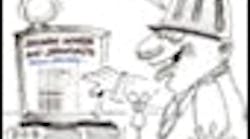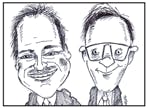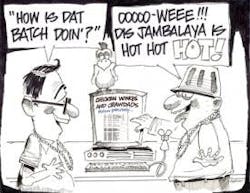By Greg McMillan and Stan Weiner, PE
Stan: Did you always want to be an instrument engineer?
Greg: I had never even heard of an instrument engineer until my last semester at Kansas University in a job interview with Monsanto. I didn’t understand exactly what an instrument engineer did, but it seemed better than the other job offer—designing one small part of a plane along with 1,000 other engineers.
Stan: What was your first job?
Greg: After perusing the standards manuals, I had the task of estimating instruments for projects despite my never having seen anything like them before. I frequently took advantage of the vast experience and good graces of a technician doing instrument engineering. Some of the best instrument engineers were technicians from the plants.
Stan: Did you get any technical training?
Greg: I attended an eight-week Monsanto instrument engineering school. It was 1969, and I learned a lot about links, levers and bellows. The labs had pneumatic instruments and controllers that had been severely abused by previous students. The head of the school was Ralph Deuschle who was instrumental in the design of innovative slim-case electronic controllers that became the Fisher Controls AC2 line, so we had a glimpse of the future in panel board instrumentation.
Stan: Where did you get to apply your new-found knowledge?
Greg: I was transferred to field construction and shipped out to a West Virginia plant. I arrived just before the startup of the first project. I quickly found out the instruments had not been checked or calibrated, and in many cases, simply unpacked and left exposed to the elements.
The plant maintenance department had the interesting policy of not getting involved at all until the unit was demonstrated and turned over to the plant. So far as the other construction engineers were concerned, instruments were just another piece of pipe and relegated them to the tender loving care of the pipe fitters. To make things even more exciting, it was a new and difficult process that was going straight from the bench top to the plant.
It was a long and excruciating startup. I have wiped out a lot of bad memories, but one stays no matter how hard I try to forget. Most of the spring, return cylinder actuators were so badly rusted from sitting out in the rain and snow for months that the lubricators were often not able to reverse the damage. It’s hard to operate a batch process if the valves don’t open. Then there were the positioners with pulleys slapped on some of the cylinder actuators in an attempt to have the on-off valves impersonate a control valve.
For the next projects, I made sure the instruments were checked, tested and protected. I trained a couple of pipe fitters to calibrate instruments, got some of the bad actors replaced and talked a lot with the lead instrument design engineer. Things were not as simple as stated, and the chemicals were nasty, but the startups were smooth. The primary reactants for a chicken-feed process were hydrogen cyanide (HCN), acrolein and methyl mercaptan. HCN is used in gas chambers. Acrolein is more lethal and extremely painful and can cause a highly exothermic reaction if it encounters rust. The pipelines were rusty on the outside, but I was assured they were clean as a whistle on the inside. Methyl mercaptan is the slinkiest chemical I know. Less than a part per million gives natural gas its warning odor. On a positive note, Monsanto ended up building a modern version of the plant, but sold it to meet some year-end financial goals. Last I heard the proud owner makes a million dollars a day profit, which is not chicken feed, even though it is making chicken feed.
From there I moved back for another stint in E&I construction at a St. Louis plant to rebuild a unit that had blown up. Here the plant instrument technicians were involved, and things went well from start to finish. I returned to instrument design and took over as lead engineer a project at a New Orleans plant from John Berra, who was leaving Monsanto for new opportunities that led to the presidency of Fisher-Rosemount.
Stan: I remember working with both you and John Berra on this project.
Greg: You helped me get off on the right foot. I stumbled a bit but never tripped. Fortunately, the operator moving the explosive catalyst from the concrete bunker to the reactor was much more adroit. One of things I learned on this startup is that Cajun operators have a great sense of humor and are superb cooks.
When the job was done, I helped develop standards for instrument installation details and built a wet lab consisting of a distillation column and neutralizer for the instrument engineering school. Then I was moved to Cambridge, Mass., where I became the lead engineer in residence at the contractor’s office for the world’s largest Acrylonitrile plant.
Over the objection of the seasoned contract engineer, I insisted that positioners not be put on flow loops. Most of these valves came back to haunt me due to high friction and tightened packing needed for environmental protection because HCN was a key byproduct, and nearly all the chemicals were classified as hazardous.
I then moved to Texas for E&I field construction to follow through in the building and startup. Fortunately, there the plant instrument department was a source of a wealth of information. I mostly made sure the instruments were installed properly and performed well during water batching and startup.
I was then given the choice of moving to England for the construction and startup of the next big acrylonitrile plant or move back to Missouri and take a dramatically different direction in my career. If I were to move to the headquarters, my books on control theory, which were so invaluable while installing d/p cells, needed to be supplemented with books I would really need for corporate life.
Top Ten Books I Really Needed
10. How to Impress MBAs
9. Creative Time Sheets
8. Can Computer Integrated Manufacturing by Your Meal Ticket?
7. Appearances are Everything
6. Short Cuts to Early Retirement
5. Fool-proof Engineering Goal Document Verbiage
4. Emerging Careers as Meeting Specialist
3. How to Win at Phone Tag
2. Impressive Graphics for Average Results
1. Taking the Capital out of Capitalism
This Month’s Puzzler:
Taking a Desuperheater’s Temperature?
How many pipe diameters downstream of desuperheaters should a temperature sensor be mounted?
Send an e-mail with your answer to the Puzzler, CONTROL questions, or comments to [email protected].

Leaders relevant to this article:





